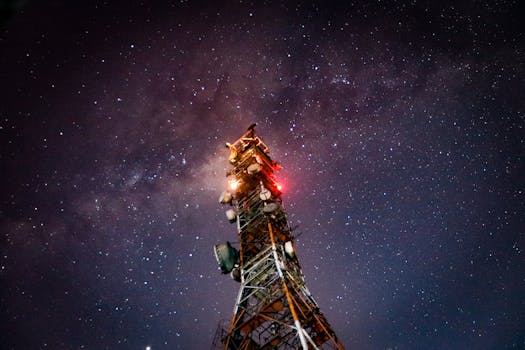
LEO satellites, or Low Earth Orbit satellites, are a type of satellite that orbits the Earth at an altitude of around 160 to 2,000 kilometers. This relatively low orbit allows LEO satellites to offer several advantages over traditional satellites, including faster data transfer rates, lower latency, and improved connectivity. LEO satellites are revolutionizing the way we communicate and access information, and are poised to play a major role in the future of global connectivity.
One of the primary benefits of LEO satellites is their ability to provide high-speed, low-latency connections. Because they are closer to the Earth’s surface than traditional satellites, LEO satellites can offer data transfer rates of up to 1 Gbps, making them ideal for applications such as video streaming, online gaming, and virtual reality. Additionally, LEO satellites have a much lower latency than traditional satellites, with signal delays of as little as 20-30 milliseconds. This makes them well-suited for real-time applications such as voice and video calls, as well as online collaboration and remote work.
Another advantage of LEO satellites is their ability to provide global coverage, even in areas where traditional communication infrastructure is limited or non-existent. LEO satellites can be used to connect remote or underserved communities, providing access to vital services such as healthcare, education, and emergency response. They can also be used to support disaster relief efforts, providing critical communication links in areas affected by natural disasters or other crises.
How LEO Satellites Work

LEO satellites work by transmitting and receiving data to and from Earth-based stations, using a combination of radio frequency (RF) and microwave signals. The satellites are equipped with transponders, which amplify and re-transmit the signals, allowing them to be received by other satellites or by ground stations. LEO satellites typically operate in the Ka-band or Ku-band frequency ranges, which offer high bandwidth and low latency.
LEO satellites are typically launched into orbit using a rocket, and once in orbit, they use their onboard propulsion systems to maintain their position and altitude. The satellites are designed to be highly maneuverable, allowing them to adjust their orbit and attitude as needed to maintain optimal communication links.
Applications of LEO Satellites

LEO satellites have a wide range of applications, including satellite internet, satellite phone, and Earth observation. They can be used to provide broadband internet access to remote or underserved communities, as well as to support emergency response efforts and disaster relief. LEO satellites can also be used for Earth observation, providing high-resolution images of the Earth’s surface and atmosphere.
Additionally, LEO satellites are being used for a variety of scientific and research applications, including climate monitoring, weather forecasting, and astronomical research. They can also be used to support the development of new technologies, such as autonomous vehicles and smart cities.
Challenges and Limitations of LEO Satellites

While LEO satellites offer many advantages, they also face several challenges and limitations. One of the primary challenges is the high cost of launching and operating a constellation of LEO satellites. Additionally, LEO satellites are subject to interference from other satellites and ground-based systems, which can impact their performance and reliability.
Another challenge facing LEO satellites is the issue of debris in Earth’s orbit. As the number of satellites in orbit increases, so does the risk of collisions and the creation of debris. This can pose a significant risk to the operation of LEO satellites, as well as to other satellites and space-based systems.
Conclusion

LEO satellites are revolutionizing the way we communicate and access information, offering faster and more reliable connections than traditional satellite technologies. With their high-speed data transfer rates, low latency, and global coverage, LEO satellites are poised to play a major role in the future of global connectivity. While they face several challenges and limitations, the benefits of LEO satellites make them an exciting and rapidly evolving field of technology.
See more:
